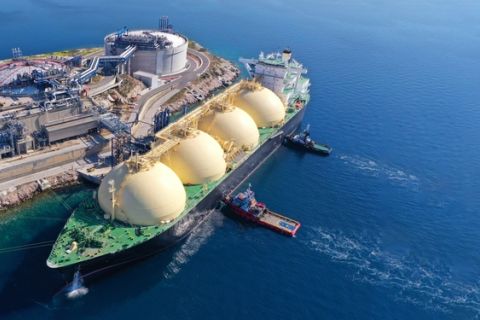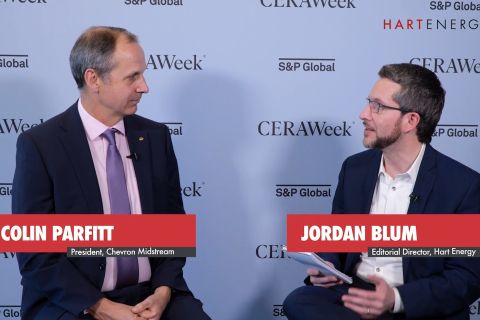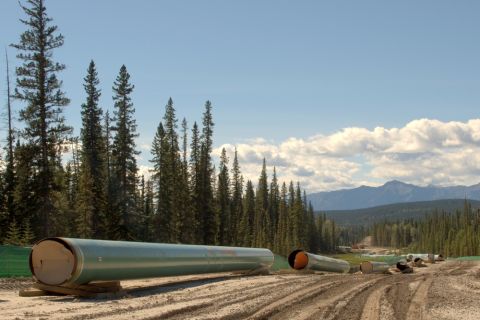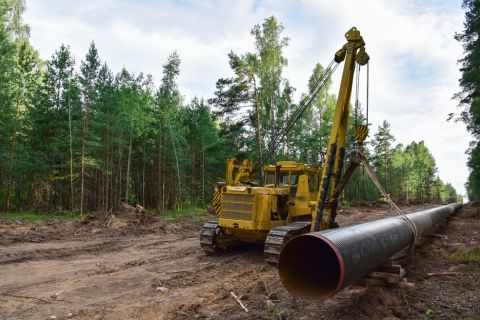LONDON—One of the world's biggest traders, Trafigura, booked a $254 million loss from oil and gas market hedges last year, highlighting the challenges traders face when taking large loans to protect against price swings in illiquid commodities.
To be sure, those losses are on paper and could be eliminated or turn into gains in the future if the market turns in Trafigura's favour. Or they could get bigger if the opposite happens.
The hedging losses at privately owned Trafigura, which made a net profit of $873 million last year, have not been previously reported.
Like many other trading houses, Trafigura has moved into the fast-growing, global market for liquefied natural gas (LNG).
Privately owned traders Vitol and Gunvor and listed Glencore are also expanding in LNG and said they were using hedges to protect their exposure in that sector.
In 2018, Trafigura signed a deal with U.S. company Cheniere to buy LNG for 15 years and export it to Europe and Asia. On signing the deal, Trafigura hedged its exposure to U.S. LNG prices against sharp price moves in the rest of the world.
But hedging LNG is complicated and contains risks, says Trafigura's own 2018 report and its auditor PwC, which reviewed and signed off on Trafigura's accounts for last year.
To hedge the deal, Trafigura had to rely on a combination of liquid prices such as those of U.S. natural gas or Brent crude and assumptions on the correlation of those liquid benchmarks to illiquid global LNG prices for up to five years forward.
"This hedge is not perfect but it is the best one available out there at the moment," a Trafigura source said. As the LNG market develops, he said, more instruments will appear.
"It is extremely difficult to effectively hedge these long-term contracts, especially in a new market like LNG," said Arnaud Vagner, founder of Iceberg Research. Vitol also said contract maturities created hedging complexities.
International financial reporting standards (IFRS) require companies to mark-to-market - or measure the changes in fair value over time - the short and long positions they use for hedging.
In addition to LNG, Trafigura in 2018 hedged its U.S. oil pipeline and refining deals against sharp moves in U.S. crude versus Brent prices.
To hedge LNG, pipelines and refining Trafigura built a short position with a fair value loss of around $1.9 billion using liquid instruments such as Brent, U.S. naturalgas and diesel.
The margin calls were financed via a revolving credit facility and other bank lines adding to Trafigura's debt, which stands at a total of $32 billion. Its adjusted net debt - debt less cash and inventories - stands at $6 billion.
On the other side of the hedge—the long side—Trafigura had fair value gains of $1.75 billion from LNG, pipelines and refining deals. The LNG portion of the gains was $646 million.
Fair value gains and losses were up more than 10-fold compared to 2017, before Trafigura entered into those LNG, pipeline and refining hedging deals.
Fair value gains and losses impact both balance sheet and profits as they are included in the cost of sales.
Because the short position was built on liquid instruments, the fair value losses belonged to the so-called level 1 accounting hierarchy - the strictest category that makes few assumptions.
By contrast, fair value gains were based on level 2 and, in the case of LNG, on level 3, the most judgmental category in the fair valuation accounting hierarchy, which is mainly based on price modelling rather than market prices.
"Changes in these estimates may significantly impact the group's future results," said PwC, adding that it was still able to conclude that judgements were reasonable and free from bias.
"Level 3 gives a lot of flexibility to commodity traders as in practice future prices are whatever the trader has decided they would be," Iceberg's Vagner said.
As losses from the shorts exceeded gains from the longs, Trafigura had to book a $254 million loss representing a reduction of 22% of the potential net profit it would have otherwise achieved in 2018.
Besides mid-term price risk, such hedges also bear the longer-term risk of deals falling apart.
For example, in the unlikely event the United States bans LNG exports, traders would be stuck with shorts against non-performing longs.
"When you hedge market risk, you take performance risk. This is how hedging works," the Trafigura source said, adding that "the performance risks can be mitigated notably by insurance mechanisms".
Vagner said: "The LNG contract is 15 years long. This type of contract is risky as anything can happen to your supplier and its market during that time".
Vagner is known for having accused Singapore-based trader Noble Group of using fair value accounting to inflate profits. Noble denied the allegations but subsequently defaulted and sold many of its assets as profits collapsed.
By contrast, Trafigura said it uses fair value accounting only on its hedging deals, inventories and certain other financial instruments.
"We don’t take profit or loss on unrealised physical transactions. Traders are remunerated on their realised performance," the Trafigura source said.
Officials and sources at other trading houses also said they were not booking unrealised profits from LNG hedges.
"Gunvor only mark-to-markets contracts in the active trading period," a spokesman said, without specifying the timeframe.
Recommended Reading
New Fortress Starts Barcarena LNG Terminal Operations in Brazil
2024-03-01 - New Fortress’ facility consists of an offshore terminal and an FSRU that will supply LNG to several customers.
Exclusive: Chevron Balancing Low Carbon Intensity, Global Oil, Gas Needs
2024-03-28 - Colin Parfitt, president of midstream at Chevron, discusses how the company continues to grow its traditional oil and gas business while focusing on growing its new energies production, in this Hart Energy Exclusive interview.
Midstream Builds in a Bearish Market
2024-03-11 - Midstream companies are sticking to long term plans for an expanded customer base, despite low gas prices, high storage levels and an uncertain political LNG future.
Imperial Expects TMX to Tighten Differentials, Raise Heavy Crude Prices
2024-02-06 - Imperial Oil expects the completion of the Trans Mountain Pipeline expansion to tighten WCS and WTI light and heavy oil differentials and boost its access to more lucrative markets in 2024.
Trans Mountain Pipeline Announces Delay for Technical Issues
2024-01-29 - The Canadian company says it is still working for a last listed in-service date by the end of 2Q 2024.





